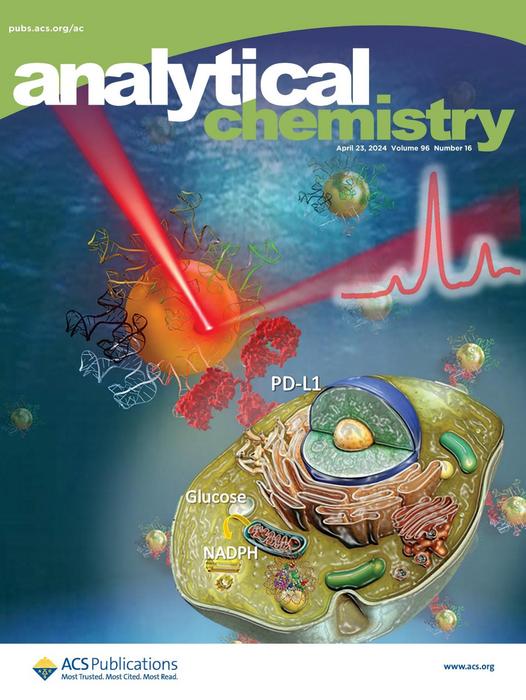
New nanoprobes developed to monitor PD-L1-related biological processes
Recently, the research group of Prof. HUANG Qing at Hefei Institutes of Physical Science, Chinese Academy of Sciences developed DNA-aptamer based surface enhanced Raman spectroscopy (SERS) probes for the study of immune system biomarker related bioprocesses in cancer cell metabolism.

Credit: Muhammad Muhammad
Recently, the research group of Prof. HUANG Qing at Hefei Institutes of Physical Science, Chinese Academy of Sciences developed DNA-aptamer based surface enhanced Raman spectroscopy (SERS) probes for the study of immune system biomarker related bioprocesses in cancer cell metabolism.
The results have been published as the cover story in journal Analytical Chemistry.
PD-1 (programmed cell death protein 1) is an important immunosuppressive molecule in the human immune system, and PD-L1 is its ligand protein molecule, both of which are immune checkpoint molecules. Immune checkpoint is an inhibitory pathway of the immune system, which is regulated by ligand/receptor interactions and it plays an important role in maintaining autoimmune tolerance and regulating physiological immune responses. It is crucial to accurately detect the dynamic process of PD-1 and PD-L1 expression, and to reveal the relevant regulatory factors and their relationships.
In the past years, the team has developed a series of biomarker-specific probes based on aptamer-SERS technology for example IL-6 protein in radiation injury and inflammation diagnosis, microRNA-122 in liver related diseases, and cancer progression related PD-L1.
In this study, they used a special type of nanoprobe made of DNA combined-SERS nanoparticles to examine PD-L1 expression in living cancer cells. PD-L1 is a protein involved in immune response regulation during cancer progression. The results revealed that PD-L1 expression varied depending on cell metabolism and the presence of certain signaling molecules called cytokines. The way PD-L1 was expressed differed between different types of cells and changed over time. Importantly, certain cytokines like IL-6, IFN-γ, and IL-4 were found to increase PD-L1 expression, but the timing and extent of this increase varied depending on the specific cell type and its state.
This study not only expands the application of aptamer-SERS biomarker technology in ICT, but also provides new experimental data and understanding for the study of the dynamic process of immune checkpoints and related regulatory factors.
Journal
Analytical Chemistry
DOI
10.1021/acs.analchem.3c05334
Article Title
Application of Aptamer-SERS Nanotags for Unveiling the PD-L1 Immunomarker Progression Correlated to the Cell Metabolic Bioprocess
Article Publication Date
6-Mar-2024